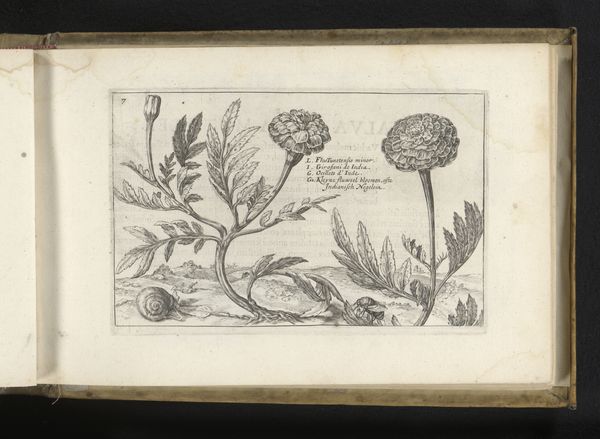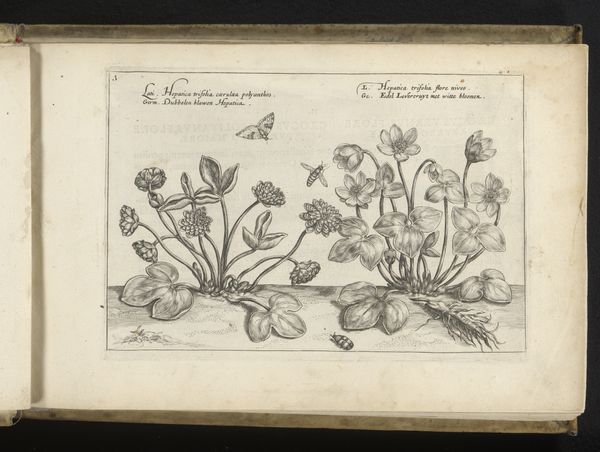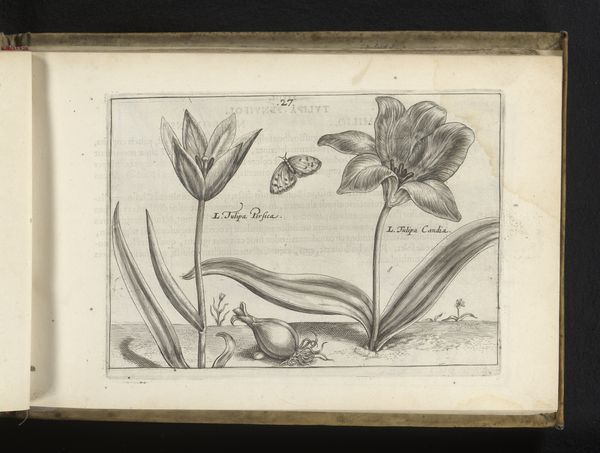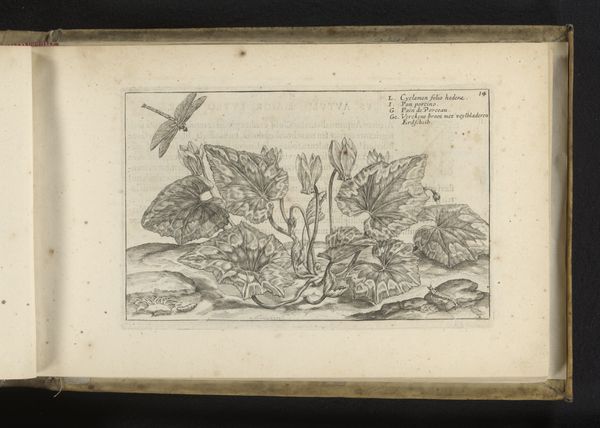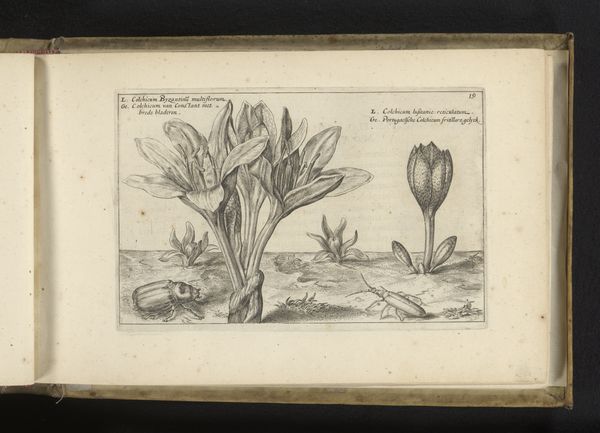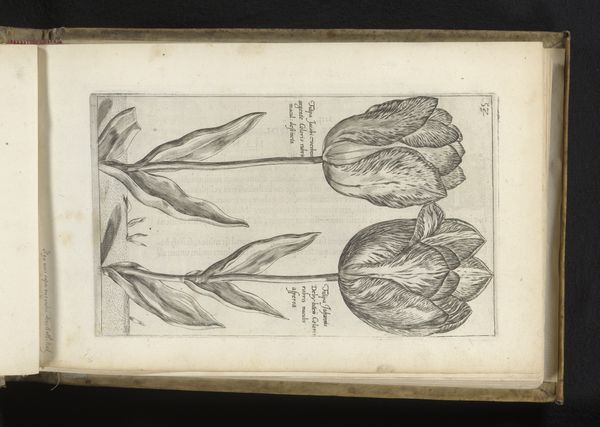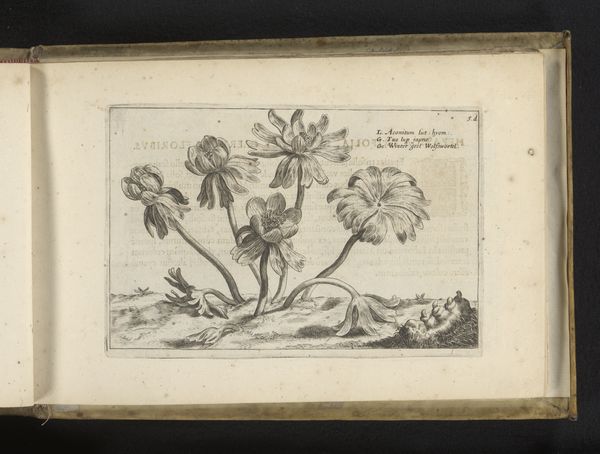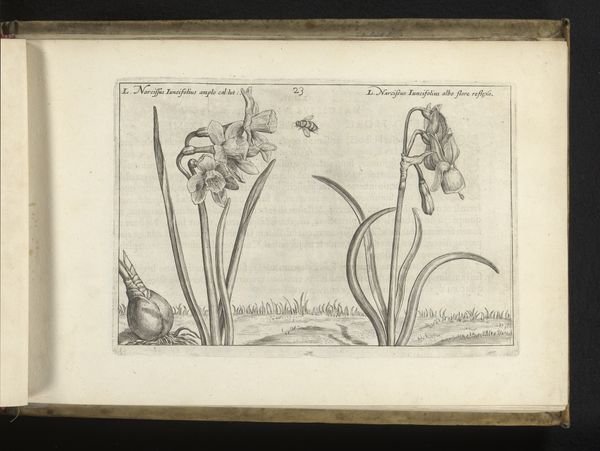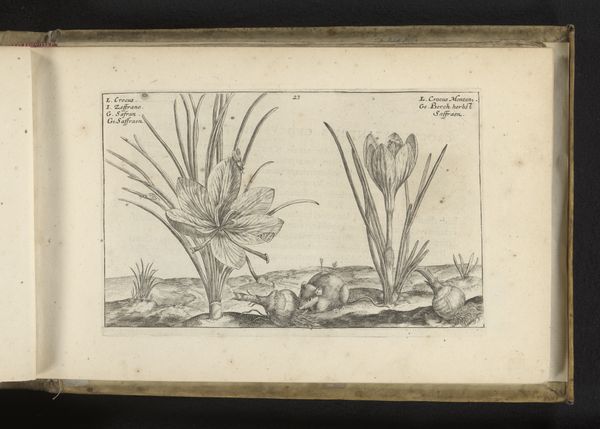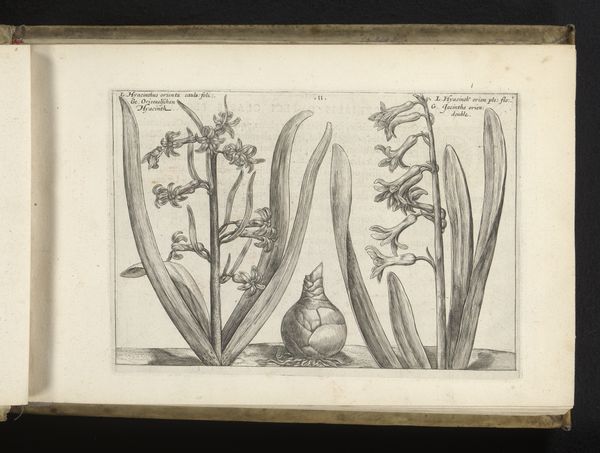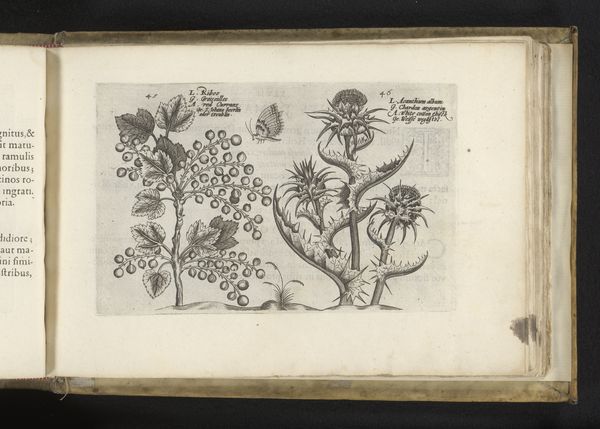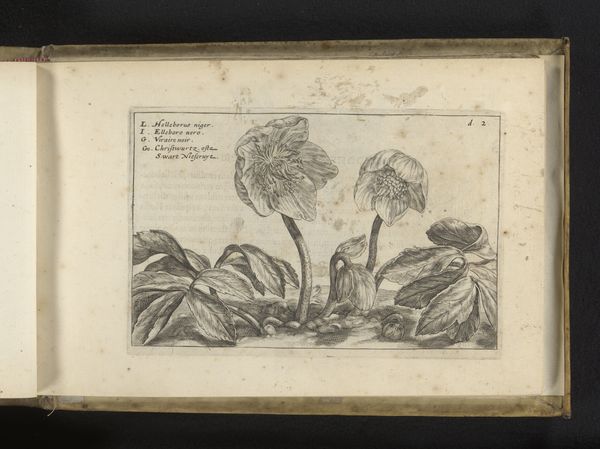
drawing, paper, ink
#
drawing
#
baroque
#
flower
#
paper
#
ink
#
geometric
#
northern-renaissance
Dimensions: height 136 mm, width 207 mm
Copyright: Rijks Museum: Open Domain
This print of a cyclamen, made by Crispijn van de Passe the Younger around the mid-17th century, is not just a picture; it's a window into the world of early botanical illustration. The technique used here is engraving, a painstaking process where the artist carves lines into a metal plate, applies ink, and then presses the plate onto paper. Look closely, and you'll see how the crispness of the engraved lines captures the delicate veining of the leaves and the intricate forms of the flowers. The weight of the lines varies, creating light and shadow, giving the plant a three-dimensional quality. This wasn't just about art; it was about science, commerce, and the burgeoning world of global trade. Botanical prints like these were essential tools for identifying, classifying, and sharing knowledge about plants, many of which were newly discovered and highly valued for their medicinal or ornamental properties. The labor-intensive process reflects the value placed on this knowledge, elevating the status of both the artist and the subject matter. It reminds us that even in art, the means of production can be as important as the image itself.
Comments
No comments
Be the first to comment and join the conversation on the ultimate creative platform.
